Long-term victims of the Half-Dipper might recall an article on the 2006 Yibang Chamasi "Menghai" cake. It was highly inexpensive, and performed above expectation. This cake, the Gedebaohao [Goteburg brand], is one I have been meaning to try ever since then, courtesy of a recommendation from Geraldo.
"Scottish Mountain" @ 100C in 10cl shengpu pot; ~8-9g leaf; 1 rinse
 Dry leaf:
Dry leaf:
Very nice indeed, being long and whole. For an inexpensive cake ($20 from Royal Pu'er), they look decent. There is a range of colours on display, from red, to brown, to various shades of green. There is a grape-like scent of maofeng about them. Green tea aromas usually arouse suspicion.
3s, 5s, 10s, 30s, 60s, 90s:
The initial lid-scent is quite sour.
The soup is a straight orange, of average clarity. The beidixiang is a very quiet sweet grassiness, with a sweet-sour lengxiang, akin to the lid-scent. This leaves me uncertain of what to expect from the pinmingbei.
The character is unusual indeed: it is low, like a dark Chinese medicine, but with a fresh mushroom character.
The tea is tingling and active on the lips and tongue, and the texture is fair. A direct, but not overpowering, ku swells to a fair huigan, that leaves the mouth watering. The chaqi is noticeable in strength, at least.
This tea has to be shown a strong hand, as it becomes underpowered if the infusions are not repeatedly and significantly increased in duration. Right to the end, it remains buzzing and active in contact with the lips and tongue.
Wet leaf:
Fairly whole, and small-to-medium in size. They are a touch thin, but nothing too serious.
Overall:
Active, quite smooth, with that pleasant, swelling huigan. It is a "second division" tea, but doesn't make any claims to be otherwise, at $20. For the money, I like it. I was hoping to be thrilled into buying a tong, but instead, I am mildly amused enough to have bought three cakes.
"Scottish Mountain" @ 100C in 10cl shengpu pot; ~8-9g leaf; 1 rinse
 Dry leaf:
Dry leaf:Very nice indeed, being long and whole. For an inexpensive cake ($20 from Royal Pu'er), they look decent. There is a range of colours on display, from red, to brown, to various shades of green. There is a grape-like scent of maofeng about them. Green tea aromas usually arouse suspicion.
3s, 5s, 10s, 30s, 60s, 90s:
The initial lid-scent is quite sour.
The soup is a straight orange, of average clarity. The beidixiang is a very quiet sweet grassiness, with a sweet-sour lengxiang, akin to the lid-scent. This leaves me uncertain of what to expect from the pinmingbei.
The character is unusual indeed: it is low, like a dark Chinese medicine, but with a fresh mushroom character.
The tea is tingling and active on the lips and tongue, and the texture is fair. A direct, but not overpowering, ku swells to a fair huigan, that leaves the mouth watering. The chaqi is noticeable in strength, at least.
This tea has to be shown a strong hand, as it becomes underpowered if the infusions are not repeatedly and significantly increased in duration. Right to the end, it remains buzzing and active in contact with the lips and tongue.
Wet leaf:
Fairly whole, and small-to-medium in size. They are a touch thin, but nothing too serious.
Overall:
Active, quite smooth, with that pleasant, swelling huigan. It is a "second division" tea, but doesn't make any claims to be otherwise, at $20. For the money, I like it. I was hoping to be thrilled into buying a tong, but instead, I am mildly amused enough to have bought three cakes.
Addendum
27 April, 2008
This tea tasted fresh, pleasant, and exhibited a decent acidic aftertaste that left me satisfied. While not the most complex tea in the world, it gave me a solid mix of broad flavour, coupled with a particularly enduring aroma.
Addendum
12 April, 2009
One year later and this tea is coming on nicely. It is dark - even darker than in the photograph above. The soup is orange, and the flavour is a decent mix of smooth straw-like characteristics, with an aftertaste of tobacco. It has some potency, and hints of redness are beginning to show in its blend. I'm very pleased with the manner in which this is aging.
Addendum
February, 2011
This trio of cakes has been with me for four years now, and the cakes themselves are just about to celebrate their fifth birthday. They were cheap and very cheerful when I bought them, but their significance is that I have tried them most years since buying them. Due to the pressures of time, I can't drink all of my tea all of the time, and so this cake, in particular, is a very useful indicator of the effect of English storage.
It was a simple $20 cake from a minor label, but I thought well of it at the time. My notes above remind me that I have enjoyed its limited charms each time that I return to it.
For a small-label, somewhat mainstream cake, it has a "hand-produced", artisan feel to it. The compression is loose, and the leaves are mostly whole and well-preserved.
The whole cake has a rich, heavy aroma of woody leaves; it has positively increased in character and potency.
My expectations are low, but hopeful, as I sit down on a slow Saturday morning.
It pours a solid orange colour, which darkens rapidly in contact with the air, as if it is alive and well. All of the laoshu cakes that I have tried exhibit this evidence of activity, and so I take it to be a good sign that the cake has not died, and become flat.
The character in the mouth is genuinely surprising - an unexpected beauty, all of a sudden. Its body is thick, and it grips the tongue well; the effect is sweet and clean. In the throat, a resounding woodiness - the tea has aged surprisingly well, and is developing into something significantly different from its original mushroom-and-straw origins.
Encouraged as to the efficacy of English storage, I spend several hours with this new-found gem. It was a solid tea at its beginning, but time has been kind to it. I feel some relief as I look over the stacks of tong after tong, every little such experiment heartening me to a small, but significant, degree.

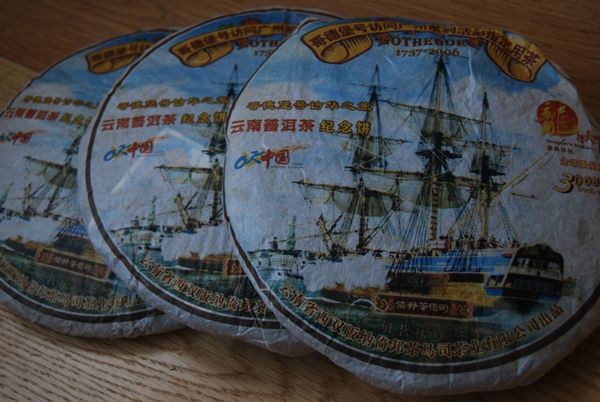
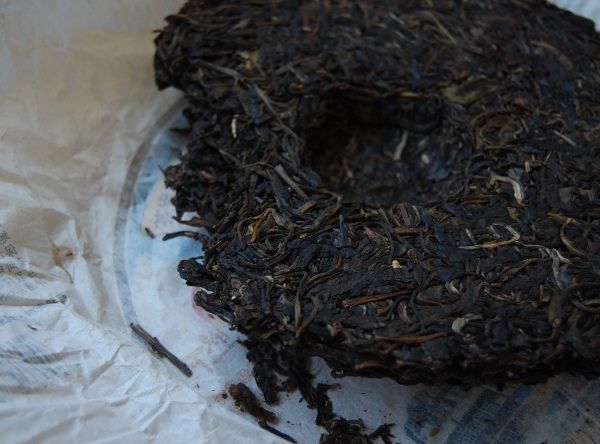
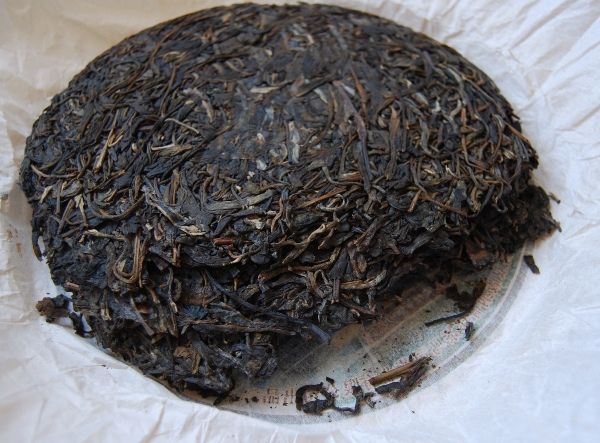
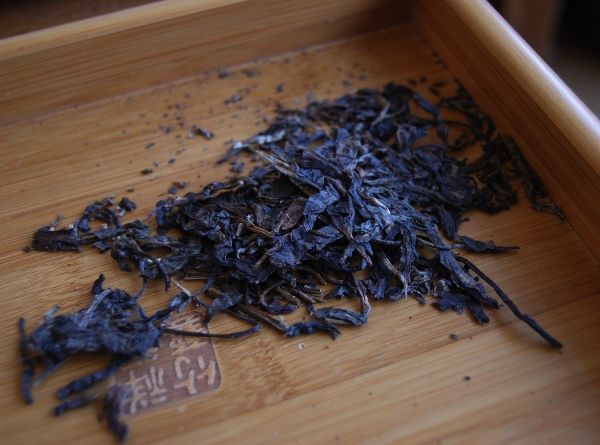
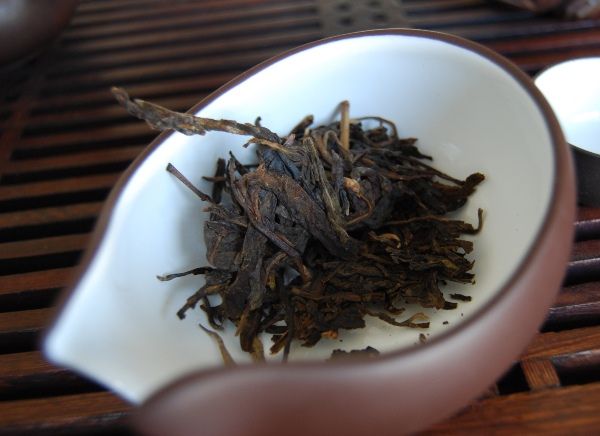
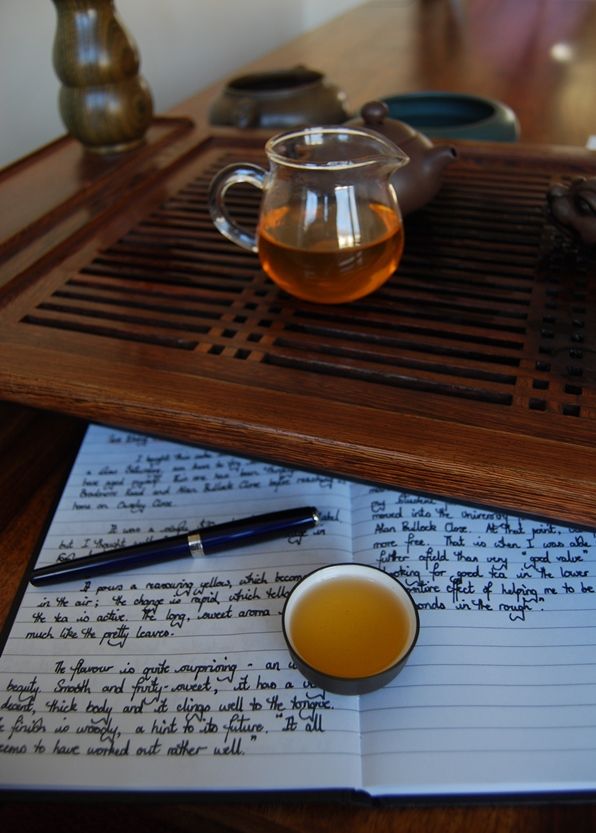
I am enjoying your blog very much - for the insightful reviews and the overall voice and generous touch of humor. So thanks.
ReplyDeleteI have started a tea blog of my own, which is here: http://teadispatches.blogspot.com/
It is a less technical and more, I guess, poetic tea blog. I added you to my link list which I am trying to be pretty selective about. I was wondering if you would care to take a look at my blog and see if you would like to return the favor?
I understand if for any reason you decide not to.
Thanks.
Susanna
Welcome back! YBCMS... odd tea :)
ReplyDelete-vl.
Welcome back dude.
ReplyDeleteThanks, chaps!
ReplyDeleteSussu, many thanks for the notification - I'll be sure to check out your blog over the coming weeks.
Toodlepip,
Hobbes
Dear Hobbes,
ReplyDeletethanks for posting this interesting and promising expirement with English storage. Do you know what the average rate of humidity is in your storage room?
Thanks!
Antonio
Dear Antonio,
ReplyDeleteIt's nice to hear from you - the humidity outside is 90% this week, but I'm not sure about inside. It feels similar, as we tend to use the heating sparingly. :)
Toodlepip,
Hobbes
He lives! :) Nice to have your voice back in the online world of tea. Though I've read a good many of your past postings (no small endeavor!) I had missed this one. What great insight to see updates on the yearly tastings. Gives me a bit of hope for the potentials of tea storage in my well-drizzled NW region. Good work :)
ReplyDeleteToo kind, Mr. Radishes; too kind - but thanks!
ReplyDeleteI get the impression that the north-west of the US (notably Seattle) is very similar in climate to the UK (rain, rain, rain), and so I hope to read of similar pleasant surprises from your own collection.
Toodlepip,
Hobbes
I use to think about UK that this country is too rainy for me. Now you make me jealousy...
ReplyDeleteI think that every Puer drinker would like to hear sentence like "Your room is the best place for aging puer on the world" But I know that my room is not.
best
Petr
It seems that continuous rain does have its advantages :)
ReplyDeleteToodlepip,
Hobbes